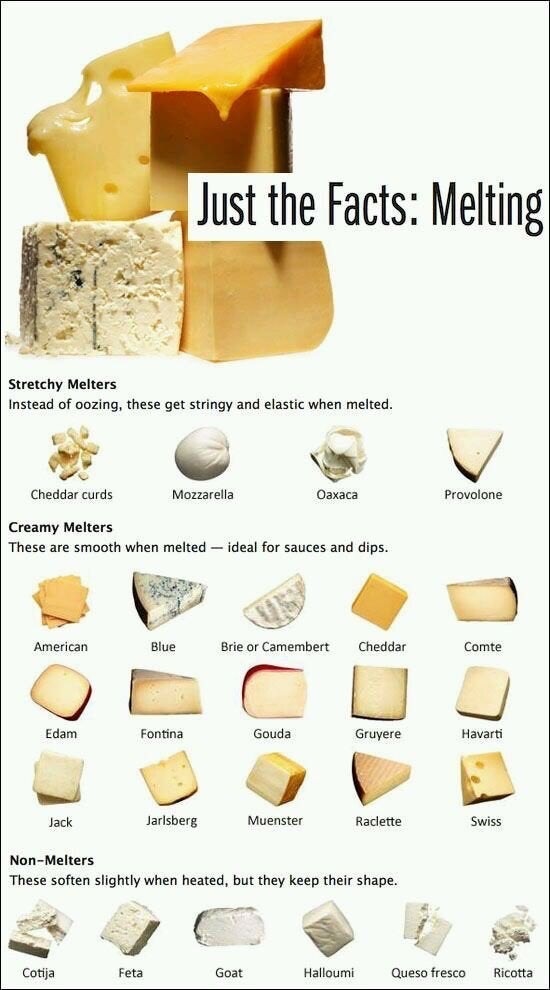Cool Guides
Rules for Posting Guides on Our Community
1. Defining a Guide Guides are comprehensive reference materials, how-tos, or comparison tables. A guide must be well-organized both in content and layout. Information should be easily accessible without unnecessary navigation. Guides can include flowcharts, step-by-step instructions, or visual references that compare different elements side by side.
2. Infographic Guidelines Infographics are permitted if they are educational and informative. They should aim to convey complex information visually and clearly. However, infographics that primarily serve as visual essays without structured guidance will be subject to removal.
3. Grey Area Moderators may use discretion when deciding to remove posts. If in doubt, message us or use downvotes for content you find inappropriate.
4. Source Attribution If you know the original source of a guide, share it in the comments to credit the creators.
5. Diverse Content To keep our community engaging, avoid saturating the feed with similar topics. Excessive posts on a single topic may be moderated to maintain diversity.
6. Verify in Comments Always check the comments for additional insights or corrections. Moderators rely on community expertise for accuracy.
Community Guidelines
-
Direct Image Links Only Only direct links to .png, .jpg, and .jpeg image formats are permitted.
-
Educational Infographics Only Infographics must aim to educate and inform with structured content. Purely narrative or non-informative infographics may be removed.
-
Serious Guides Only Nonserious or comedy-based guides will be removed.
-
No Harmful Content Guides promoting dangerous or harmful activities/materials will be removed. This includes content intended to cause harm to others.
By following these rules, we can maintain a diverse and informative community. If you have any questions or concerns, feel free to reach out to the moderators. Thank you for contributing responsibly!
view the rest of the comments

Sodium citrate is amazing. It’s an emulsifier, which allows the fat to stay bonded with water. Normally the fat and water separates as soon as the cheese melts, and you end up with chunky or gritty cheese sauce. So we use an emulsifier to allow the two to mix smoothly.
Natural emulsifiers are fairly common, but tend to have issues in regards to cooking. For instance, egg yolks contain an emulsifier, but it will scald and denature when it gets hot… Wine also has an emulsifier but has the same issue.
This is why fondue recipes call for wine. It allows the fondue to melt smoothly, and the double-boiler fondue pot ensures the fondue never gets hot enough to denature. It’s also why baking calls for eggs, to allow the oil and water to mix together long enough for the flour to begin cooking.
And the nice part about sodium citrate is that it has a much higher heat tolerance. It’s also a very “dense” emulsifier. In other words, a little bit of sodium citrate will go a long way. You don’t need to worry about accidentally burning your cheese sauce and making it clumpy. (You can still burn the cheese, but it won’t destroy the texture.) If you’re ever making queso for tex-mex, a scoop of sodium citrate will ensure it stays wonderfully smooth.
If you don’t want to bother with the $5 bag, (which honestly you should just go ahead and get, but whatever…) then you can make a dirty form at home with lemon juice and baking soda. Combine the two, and the resulting product is trisodium citrate. Basically, take a squeeze of lemon juice, and stir baking soda in until it stops fizzing. Now you have something that tastes vaguely lemony, but will melt cheese like a motherfucker. Lab grade sodium citrate doesn’t have that lemony flavor, so it won’t skew the flavor of your dishes.
Most salts have fairly high heat tolerance or burning temperatures compared to things like sugar, probably why sodium citrate works well for this task while use of other biological emulsifiers such as soy lecithin do not. Although, many cheeses have lecithin added during the creation process.